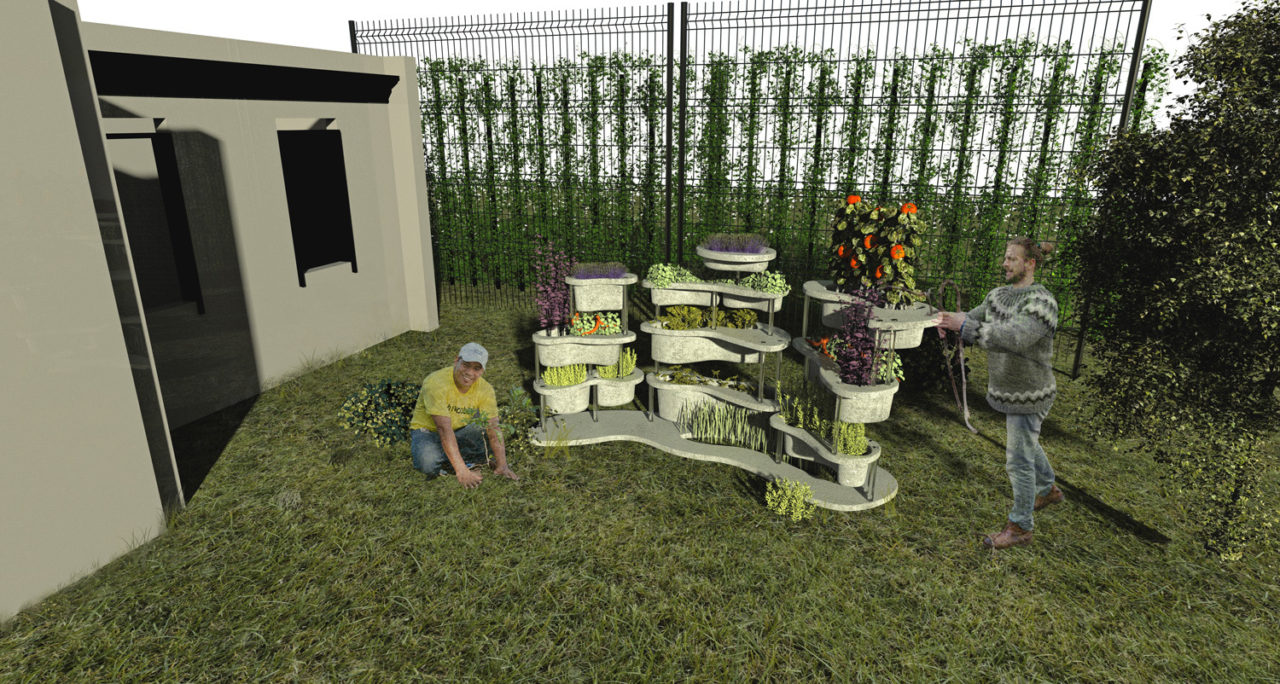Master Industrial Design x Festo BV
The Future is Local: local production responding to local needs.
The future of production lies in digitization and automation. During the semester themed The Future is Local first year students of the Master Industrial Design visited important players in the industrial field such as Festo, Brightlands Materials Center: Additive Manufacturing, Phillips and Smart Robotics. They built a valuable connection with the producers of tomorrow and discussed the developments in their industry.
Recently developed production techniques bring new opportunities for local production. Additive manufacturing will lead to new applications and lower tooling costs of individually customized parts and products. The growing customer demand for quality, speed and flexibility plays an important role in this. Local production enables customization and with the use of local available (recycled) materials.
In their projects the students explored how these technologies can be deployed to develop a product that is meaningful, aesthetically attractive, ecologically durable and with a positive impact on society.
Design concepts
Tipits is a 3D printing design and research project to build earthen houses for First Nation reserves in Canada. First Nation reserves are home to many Native Canadians and often remotely located. The shortages of goods and facilities in these reserves are said to have reached Third World standards in a First World country. Housing facilities are often overcrowded and ill-maintained, poorly insulated and mouldy. Due to many reserves’ isolated location, building materials are expensive to transport and skilled craftsmen are often unavailable.
A lot of people suffer from arthrosis in the hands. Around 30 % of women above the age of 40 show signs of degeneration on an X-ray of the hands. At some point these women will need a hand orthosis to stabilize the affected joint and reduce pain. (An orthosis is an externally applied device used to modify the structural and functional characteristics of the neuromuscular and skeletal system). Such an orthosis is made by an orthotist. I looked into the system of the patient-doctor-orthotist-health insurance, to see in what way computer aided manufacturing (CAM) could be of benefit.
Correctional facilities are stressful environments experienced by millions of people everyday. Yet designers rarely take these environments into consideration. I believe that it makes sense to apply a local production-systems to a disadvantaged and marginalized context such as this one, rather than to other contexts which are already bubbling with activities. The aim of this project is to improve the psychological and physical conditions in prison through the use of Additive Manufacturing for prototyping and producing the design elements of a vertical garden-structure. Both the resulting vertical garden and the process of prototyping and producing the garden will have therapeutic benefits for the offenders and could possibly reduce recidivism.
Our master students used the knowledge and facilities of Festo, Smart Robotics and Brightlands Materials Center to support their design projects. In return, their approaches inspire the industry by bringing up new visions and ideas on how to implement additive manufacturing into design processes and production.
The results of their design projects will be presented during an event open to the public on June 21st at the premises of Festo BV in Delft.
Participating MA Industrial Design students
Alicja Czop
Conrado Bergemann
Johanna Günzl
Federica Marrella
Cecilia Polonara
Jan Sengers
Daphne Story
Leon Wezenberg
Marsha Wichers
